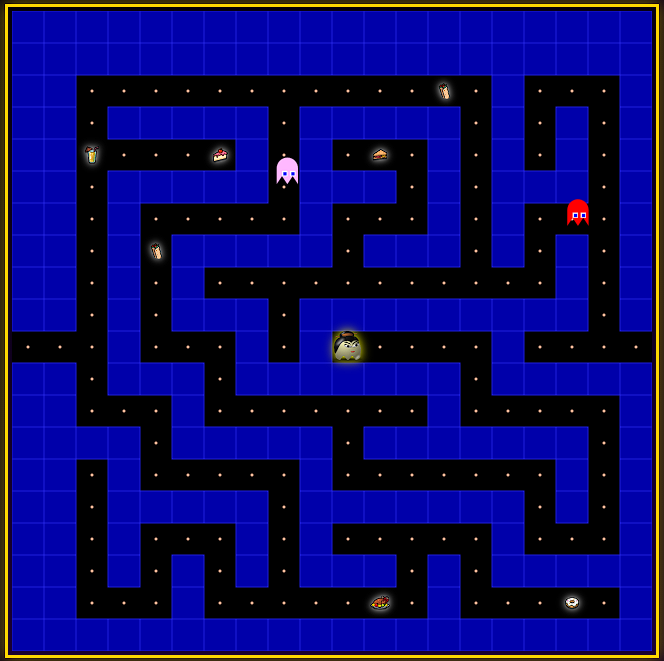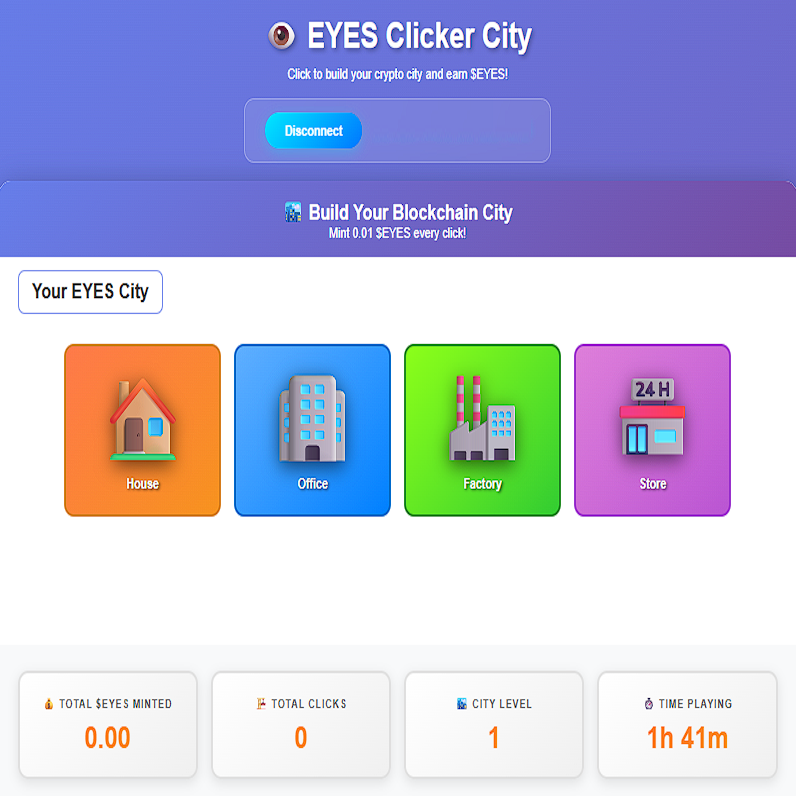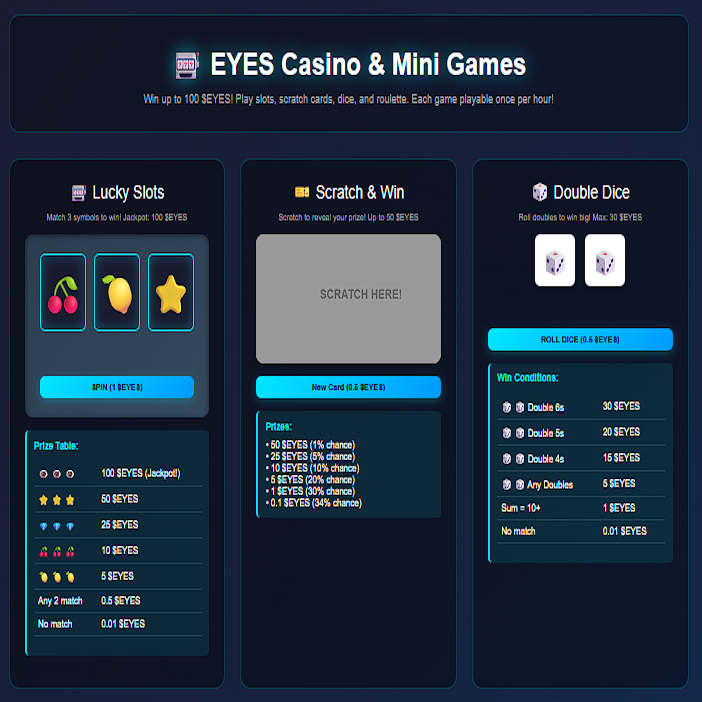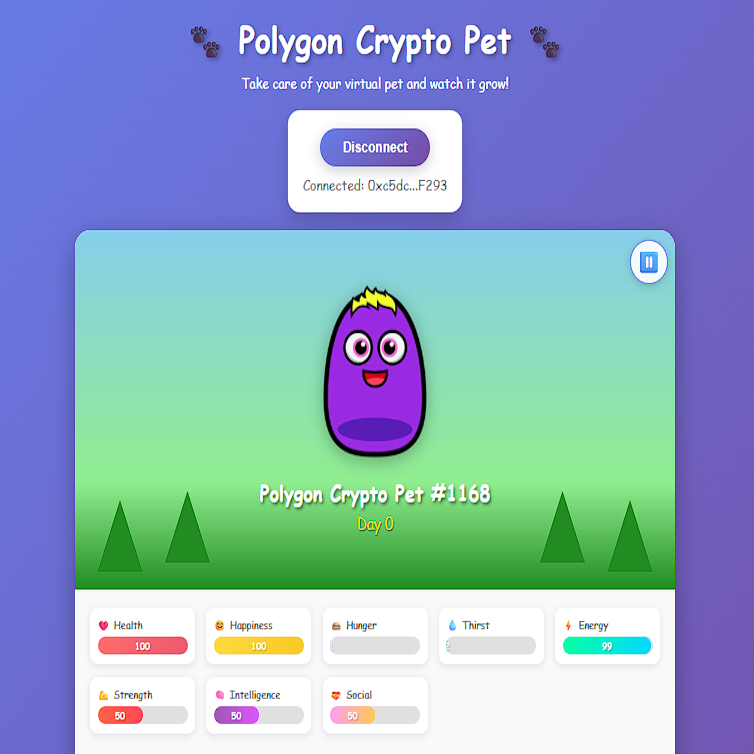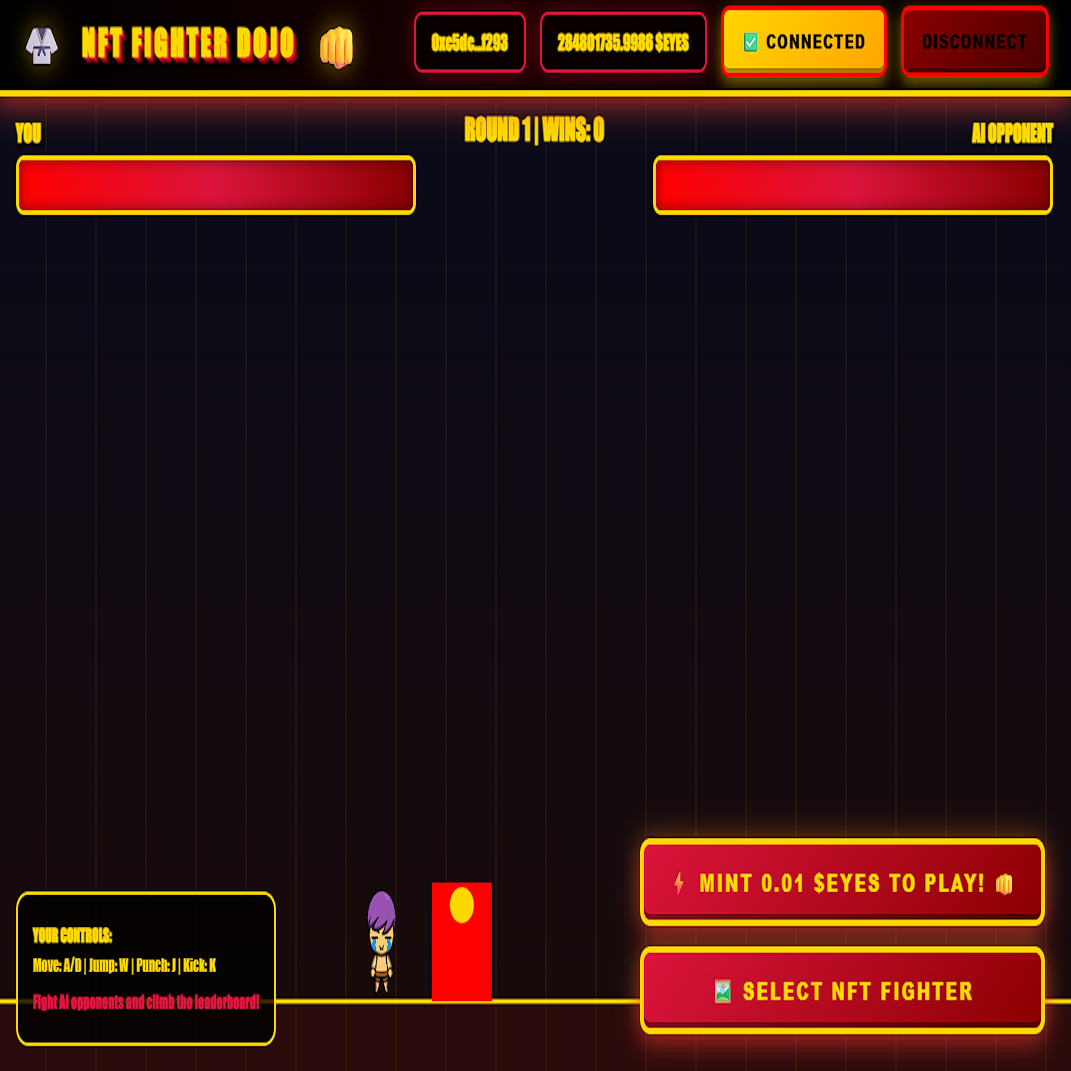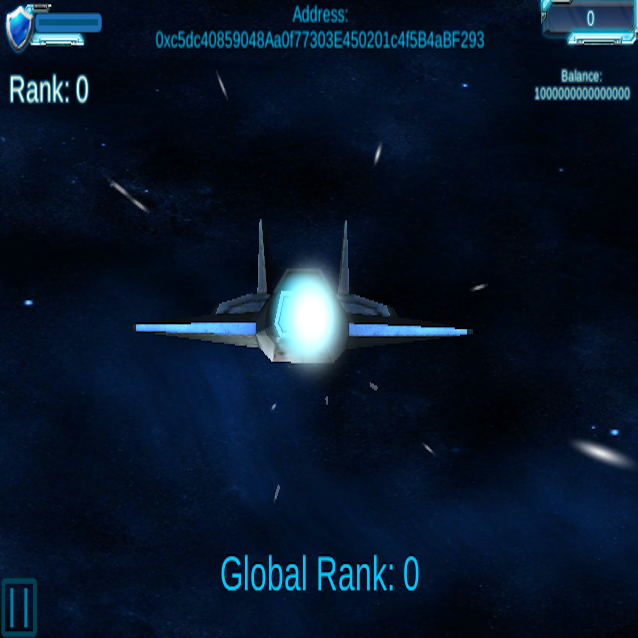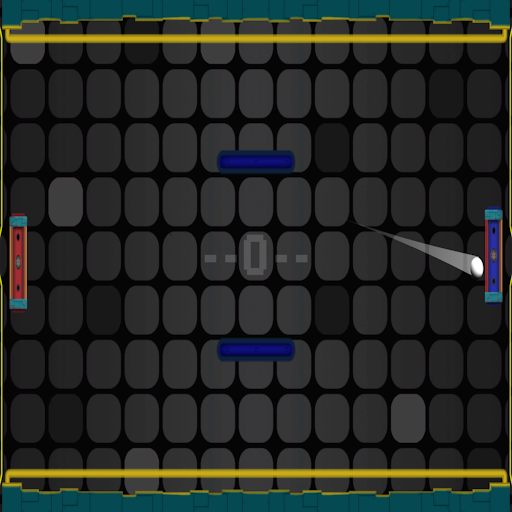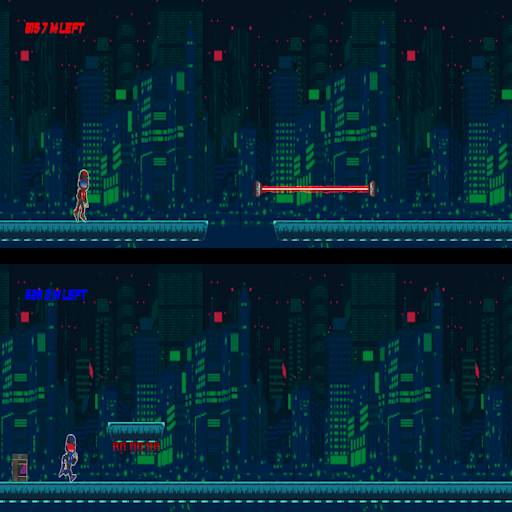Picture this: It’s 2025, late on a Friday night. In a neon-lit gaming cafe, a group of college kids huddle around an arcade cabinet cheering as Commander Keen dodges aliens on a pixelated screen. At the bar, a pair of 40-somethings excitedly compete for the high score in DOOM’s E1M1, just like it’s 1993 all over again. Sounds like a time warp? Not at all – this is the present day. Classic MS-DOS games are back, and they’re cooler than ever. From nostalgic living rooms to trendy “barcades,” DOSBox games and arcades have surged in popularity in 2025, bringing generations together through the simple joy of retro gaming. How did these decades-old games escape the dusty floppy disks of history and find themselves in the spotlight once more? Let’s dive into the surprisingly vibrant renaissance of DOS gaming and arcades, and see why everyone from veteran gamers to Gen-Z streamers are hopping on the DOS train.
Retro Arcade Games Reloaded: The DOS Gaming Revival
Retro gaming isn’t just a niche hobby anymore – it’s a full-blown cultural phenomenon. And at the heart of this trend are the classic DOS games of the 1980s and 90s. These pixelated treasures, once limited to beige PCs and CRT monitors, are captivating both seasoned players and newcomers in 2025. Why are DOS games making such a powerful comeback in the modern era? A few key reasons stand out:
-
Nostalgic Time Machine: For older gamers, firing up a DOS game is like hopping into a DeLorean back to childhood. The bleeps and bloops of the PC speaker or Sound Blaster, the EGA/VGA graphics, and the shareware splash screens all evoke fond memories of cozy afternoons spent on classic titles. That emotional pull is powerful – who wouldn’t want to relive the magic of slaying demons in DOOM or saving the galaxy in Commander Keen like it’s 1995 again?
-
Timeless Simplicity: Retro DOS games are celebrated for their straightforward, pick-up-and-play gameplay. There’s no 30-minute tutorial or 50GB patch; you just jump in and have fun. These games were made in an era when developers had to hook players immediately – and it shows. Whether it’s a platformer with three keyboard controls or a text adventure that only needs your imagination, old-school games focus on pure, engaging gameplay without the fluff. In today’s world of complex, hyper-realistic games, that simplicity is a refreshing palate cleanser.
-
Unique Retro Aesthetics: The vibrant pixel art, 16-color EGA palettes, and charming chiptune music of DOS games aren’t seen as primitive anymore – they’re art. Modern pop culture has embraced the 8-bit/16-bit aesthetic through indie games, synthwave music, and even TV shows, which in turn shines a spotlight back on the originals. The chunky graphics and MIDI soundtracks of DOS titles have a quirky authenticity that many find irresistibly cool today, standing out amid the glossy visuals of 2025’s new releases.
-
Accessibility on Modern Platforms: Unlike the early 2000s when running old DOS games meant wrestling with IRQ settings or obsolete hardware, today it’s ridiculously easy. Emulation and digital distribution have made classics accessible to anyone. You can download a tiny emulator and within minutes be playing games that pre-date the internet. With official mini consoles, digital storefronts, and emulators aplenty, revisiting these classics no longer requires scouring eBay for a 486 PC. (We’ll talk more about the tech magic behind this in a moment!)
-
Cultural Exchange Between Generations: Those who grew up with DOS games are now introducing them to their kids, younger siblings, and online followers. It’s quite the sight to see a teenager in 2025 discover the thrill of Prince of Persia (1989) or Wolfenstein 3D (1992) for the first time – and loving it. These games, with their blocky visuals and all, are bridging generations. “Bridging generations” isn’t just a figure of speech: younger players are genuinely developing an appreciation for gaming history by experiencing these classics, often right alongside older mentors or parents.
-
Inspiration for Modern Games: The influence of DOS-era games is all over the modern gaming landscape. Many indie developers grew up playing X-COM, SimCity, or Ultima, and are now creating new titles that pay homage to those classics. That means when a curious gamer traces their favorite indie hit back to its roots, they end up exploring the DOS classics that inspired it. The result? A virtuous cycle, where old games inspire new ones, which in turn send players back to discover the old gems.
The result of all this is a DOS gaming renaissance – something even the most optimistic 90s gamer might not have imagined. These once-“dead” games have leveled up into mainstream awareness again. In the words of one retro gaming blog, “Old-school games have a unique charm offering a refreshing departure from the hyper-realistic titles of today”. And it’s not just about nostalgia; it’s about the enduring quality and fun these games deliver. Great gameplay is timeless, and the resurgence of DOS classics in 2025 proves it emphatically.
DOSBox Everywhere: Modern Tech for Retro Games
How exactly are we all playing 30-year-old games on our slick 2025 devices? Enter DOSBox – the unsung hero powering this revival. DOSBox is an open-source x86 emulator that creates a virtual DOS environment on modern systems. In plain terms, it’s like a magic time-traveling PC that lives inside your current PC (or Mac, or phone!) and thinks it’s 1990. Without DOSBox (and its enhanced offshoots), our beloved DOS games would be locked away in the past. Here’s how DOSBox has made retro gaming ridiculously accessible today:
-
Ultimate Compatibility: Since its first release back in 2002, DOSBox has become the go-to solution for running vintage DOS software. It mimics old hardware – from the CPU and sound cards right down to the dial-up modem screeches – allowing games to run exactly as they did on original machines. No need to hunt for an old Sound Blaster card or a copy of MS-DOS; DOSBox handles it all in software. As a result, you can install DOSBox on Windows 11, macOS, Linux, or even an Android phone and instantly launch thousands of classic games with surprising ease.
-
Simple Setup (No PhD in Retro Computing Required): Back in the day, getting a DOS game to run could involve editing config.sys, managing memory with EMM386, or other arcane rites. In 2025, it’s a cinch. Modern DOSBox forks like DOSBox Staging have streamlined the process so much that running your own “DOS PC” is just a few clicks now. Install DOSBox, point it to your game folder, and boom – you’re at a C:\> prompt ready to play. As How-To Geek noted, “DOSBox Staging takes most of the technical details out of the equation. Just install the emulator, grab your game, and before you know it, you’ve died of dysentery on the Oregon Trail.” (Yes, even the notorious Oregon Trail is back to claiming victims in 2025, this time on ultrabooks and phones instead of Apple IIs!).
-
Runs on Anything (Literally): Thanks to DOSBox’s portability, you can run DOS programs almost anywhere: on a laptop, a Raspberry Pi, or even a web browser. Want to carry 500 DOS games in your pocket? Load up a DOSBox app on your smartphone and you’ve basically got a DOS arcade on the go. In fact, the Internet Archive hosts an entire library of over 4,000 DOS games that you can play right in your browser via an emulated DOSBox. No downloads required – just click and play Jazz Jackrabbit or Leisure Suit Larry in a Chrome tab at work (we won’t tell your boss!). The ability to embed DOS emulation into websites, mini-consoles, and custom hardware has truly put these games everywhere.
-
Community-Driven Upgrades: While the official DOSBox releases slowed down (the last stable version was 0.74-3, and it hasn’t changed much in years), the community stepped up. Projects like DOSBox Staging and DOSBox-X actively modernize the emulator with quality-of-life improvements, better interface options, and support for today’s systems. They’ve fixed long-standing bugs, added features (like improved graphics scaling, 3Dfx Voodoo support, or easy MIDI setups), and generally made DOS gaming smoother on current machines. In short, DOSBox in 2025 is more powerful and user-friendly than ever. It’s even integrated into popular front-end launchers – which brings us to…
-
One-Click Launchers & Packs: You don’t need to be a tech wizard to enjoy DOS classics now. Many games come pre-packaged with DOSBox configured for you. Buy a classic from GOG.com (Good Old Games), for example, and it often arrives with DOSBox bundled – you just hit “play” and it runs. There are also front-end apps like LaunchBox and RetroArch that organize your retro game library with covers and let you launch any DOS game like it’s a native app. There’s even the massive community project eXoDOS, which curates almost every DOS game in existence into a huge collection with all the settings done for you. It’s never been easier for the average person to dive into DOS gaming without frustration.
The upshot of all this tech? Digital preservation on a grand scale. Games that would otherwise be lost to obsolescence are now preserved and playable by new generations. DOSBox has provided a “lifeline” for these classics, ensuring they’re not just museum pieces but living games that can still entertain and inspire. In 2025, we’re essentially carrying a virtual 90s computer in our modern devices, unlocking an entire era of gaming history on demand. The barrier to entry has fallen away, leaving nothing but the fun parts of retro gaming for everyone to enjoy.
From Basement to Barcade: The DOS Arcade Renaissance
One of the most exciting developments of this retro revival is how it’s spilled out from home PCs into social gaming spaces. The arcade is back – with a DOS twist! Throughout the world, arcade bars (“barcades”) and retro gaming lounges are popping up, filled with classic stand-up cabinets and pinball machines. But alongside the Jousts, Pac-Mans, and Street Fighters, you’ll now sometimes find something unexpected: custom arcade rigs running PC DOS games via emulation. Yes, the same DOS games once confined to clunky desktop towers have muscled their way into the arcade scene of 2025.
Why arcades, and what do DOS games have to do with them? First, arcades themselves have made a roaring comeback as people seek more social, in-person gaming experiences. Retro arcade bars combine two things adults love – nostalgia and craft beer – and they’ve exploded in popularity across cities worldwide. The shared experience of crowding around a cabinet, the physical button-mashing, the little victory dances when someone wins – you can’t replicate that over the internet. As one arcade enthusiast site noted, “the nostalgic allure of arcade gaming has sparked a significant revival”, drawing both those who remember the 80s/90s and younger folks curious about that golden era.
Traditionally, arcades meant coin-operated machines dedicated to one game each. But in 2025, many arcade venues (and home arcade builders) are leveraging emulation to create multi-game cabinets. With a powerful PC or single-board computer inside, a single cabinet can offer a menu of hundreds of games from various classic systems. And guess what fits perfectly into that model? DOS games! Modern arcade cabinets often run software like MAME (for arcade ROMs) alongside DOSBox and other emulators, effectively becoming time machines for all retro gaming, not just coin-ops.
This convergence means you might walk up to a custom-built arcade machine and not only select arcade hits like Galaga, but also boot up Duke Nukem 3D or Jazz Jackrabbit on the same unit. Enthusiasts have embraced this: online forums are full of projects where people cram a PC into an arcade cabinet and wire the controls to work with DOSBox, enabling classic PC games to be played with a joystick and buttons. Surprisingly, many DOS games translate well to the arcade form. Early PC games often imitated arcade genres – there were DOS shoot-’em-ups, fighting games, platformers, and puzzle games that feel right at home on a cabinet. Community members suggest titles like One Must Fall 2097 (a DOS fighting game), Raptor: Call of the Shadows (a top-down shooter), or TMNT: Manhattan Missions (a beat ’em up) as great choices for a DOS-based arcade machine. These games have “instant action and simple controls”, perfect for an arcade stick and buttons, offering the same quick thrills as their coin-op cousins.
The hybrid nature of these setups is a cultural win-win. For arcade aficionados, it broadens the library beyond the usual coin-op titles – introducing players to the rich catalog of 90s PC gaming. For DOS fans, it’s a chance to experience their favorites in a new social setting, often on big arcade monitors with friends gathered round. There’s even a bit of legendary lore that gets people excited: rumors of a mysterious DOOM II arcade cabinet have floated around for years (a prop in a 90s movie sparked the myth). While an official DOOM arcade machine never actually hit the market, enterprising fans today can essentially make that a reality with DOSBox and a DIY cabinet. How cool is it to finally play DOOM II on a stand-up arcade machine in 2025, fulfilling that “what if” scenario from our dreams?
Beyond the grassroots projects, the commercial side is tapping into the home arcade craze too. Companies like Arcade1Up sell affordable replica cabinets of classic games, and their huge success demonstrated the demand for arcade experiences at home. Now, more and more people are commissioning custom cabinets or building their own. According to one arcade cabinet craftsman, orders for bespoke arcade machines have tripled in recent years. Many of these custom builds come with modern hardware inside, enabling them to run thousands of games across multiple platforms via emulation. Naturally, an entire DOS games collection can be one “platform” on such a machine. So you’ll find folks who have a beautifully painted arcade cab in their game room, loaded with everything from Donkey Kong to Descent (the 1995 3D space shooter) in one device. With features like giant LCD screens, LEDs, and internet connectivity, these setups marry nostalgia and high-tech in a way that feels very 2025.
Importantly, the arcade revival isn’t just about solitary play – it’s social. Retro arcades and gaming events are bringing people together. It’s not unusual now to have a “LAN party” corner at retro gaming conventions where networkable DOS games like DOOM, Warcraft II, or Duke Nukem 3D are played on period-appropriate PCs or emulators, next to rows of arcade cabinets. There’s a tangible excitement in the air when a high-score competition in Pac-Man is happening next to a group co-oping in Gauntlet, while a pair duel in Street Fighter II, and another duo races in the DOS classic Stunts. The crossover of arcade and DOS gaming cultures creates a broader retro community that appreciates games of all stripes.
All in all, DOSBox arcades – whether DIY home projects or part of public barcades – demonstrate the versatility of DOS games in 2025. They can leave the confines of a desktop monitor and become a shared, physical experience again. By blending into the arcade renaissance, DOS games find new audiences and new life. It’s the ultimate validation that these classics are meant to be played and enjoyed, not just archived. As one retro gaming writer put it, in today’s arcades and game rooms we have modern hardware delivering “thousands of games across multiple systems on a single machine”, letting us party like it’s 1985 and 1995 at the same time!
Community and Culture: Fans Keeping the DOS Spirit Alive
Perhaps the most heartwarming aspect of the DOS revival is the community that has grown around it. The technology makes it possible to play the games, but it’s the people – fans, developers, and preservationists – who give the movement its soul and ensure it continues to thrive. In 2025, communities dedicated to DOS gaming are bustling with activity, proving that these games are far from forgotten curios. Here are some ways the culture is very much alive and kicking:
-
Online Communities & Forums: If you have even a passing interest in DOS games, you’ll find a welcoming community ready to nerd out with you. On Reddit alone, there’s r/dosgaming, a subreddit where thousands of members share tips, mods, memories, and help each other get games running on modern setups. Got a problem with X-COM: UFO Defense crashing? Need suggestions for obscure platformers to try? The hive mind has you covered. Likewise, the official DOSBox forums (hosted on the venerable VOGONS – “Very Old Games on New Systems” – platform) are still active with enthusiasts and even developers helping newcomers. It’s not uncommon to see a thread from a teenager asking, “How do I play DOS games today?” and getting step-by-step advice from veterans who are thrilled to pass on the torch.
-
DOS Game Club – A Book Club for DOS Games: One of the coolest community initiatives is DOS Game Club, a monthly online discussion group and podcast that works just like a book club. Each month, members vote on a classic DOS game to play together. They spend the month playing it at their own pace, sharing their thoughts and experiences on the forums and Discord, and then the organizers record a podcast episode discussing that game in depth (often with community members as guests). DOS Game Club covers a wide range of titles – from famous blockbusters to hidden gems – ensuring that lesser-known games get some time in the spotlight too. This club has been a smash hit in uniting fans across the globe. Whether you’ve been playing Dune II since 1992 or just discovered Daggerfall in 2022, everyone is welcome to join in the conversation. It’s a wonderful example of how organized nostalgia can be both fun and enriching; people share memories, gameplay tips, and even create fan art or guides for the monthly game. The club’s mission also has a preservationist angle – by thoroughly discussing and documenting these games, they’re creating an archive of knowledge and appreciation for future generations.
-
Streamers and Content Creators: In the age of Twitch and YouTube, even retro games have their airtime. A number of content creators dedicate themselves to exploring classic PC games. You’ll find Twitch streamers doing playthroughs of Ultima VII or King’s Quest with live chat discussing the game’s history. On YouTube, channels like LGR (Lazy Game Reviews), Modern Vintage Gamer, and others produce videos on retro hardware and software that often include DOS favorites. This content introduces DOS games to viewers who maybe never experienced them. For instance, a viral video about “beating Oregon Trail in 2025” or “why SimCity 2000 is still awesome” can spark thousands of people to try it themselves. The Retro gaming category on Twitch isn’t as big as Fortnite or League of Legends, of course, but it has a dedicated following. If you tune in, you might catch a speedrunner blitzing through Commander Keen or a casual streamer chilling with some Cosmo’s Cosmic Adventure on a Sunday afternoon. It’s equal parts entertaining and educational – a shared window into gaming’s past. And whenever a big gaming anniversary hits (say, the 30th birthday of DOOM in 2023 or SimCity in 2019), expect social media to light up with tributes and clips, often driving even more people to check these games out.
-
Fan Projects & New Content: The DOS gaming community isn’t only replaying the old stuff – they’re also hacking, modding, and even creating new games for the platform! The modding scenes for games like Doom, Duke Nukem 3D, and Civilization are legendary and still active. New Doom WADs (levels and total conversions) come out regularly, thanks to an absolutely devoted fanbase that loves id Software’s classics. For example, Doom celebrated its 30th anniversary with fan-made episodes and even a community-made “Megawad” compilation to showcase new levels. These may often run via modern source ports, but they keep the spirit of DOS era gaming alive and compatible with DOSBox as well. On the adventure gaming side, ScummVM (a cousin project to DOSBox tailored for point-and-click adventures) has enabled fans to retranslate, voice-mod, or enhance classic LucasArts and Sierra adventures, giving them a longer life.
Incredibly, there’s even a small homebrew scene for DOS – yes, programmers making brand new DOS games in the 2020s! Websites like DOS Haven curate 21st-century DOS games that hobbyists have developed. Their slogan is, “just because something’s old doesn’t mean you throw it away,” and they’ve tracked nearly 250 new DOS-compatible titles created in recent years. Why would someone make a game for an “obsolete” platform? “Because it’s fun… and thanks to DOSBox, you can run DOS programs almost anywhere,” the site says emphatically. It’s the retro programming equivalent of making music on a vintage analog synth – an artistic challenge that also produces something cool for the community to enjoy. From simple puzzle games to FPS experiments, these new DOS games prove that the platform still inspires creativity. And since DOSBox makes distribution easy, creators know their DOS-based game can reach players on modern OSes without a hitch.
-
Conventions and Events: In pre-2020 times, retro gaming conventions were on the rise, and they’ve come back strong by 2025. Events like Classic Gaming Expo, PAX retro panels, or local computer museum gatherings often feature DOS game tournaments, cosplay (yes, someone dressed as Roger Wilco from Space Quest or as the SkiFree yeti), and buy/sell/trade markets for old software. These events solidify the community vibe – people swapping old shareware disks, showing off retro-PC builds (hello, glowing turbo button PCs!), and preserving physical artifacts of DOS history. Some passionate collectors even set up full vintage PC kiosks at events so attendees can experience games exactly as they were (on period CRT monitors and all). And for those who can’t travel, there are online events and Discord communities hosting “old-school LAN parties” virtually, using DOSBox’s IPX networking emulation to get multiplayer DOS games going over the internet (ever tried an 8-player game of Doom II deathmatch in 2025? It’s a blast from the past with modern ping times!). The fact that you can still find an opponent for Command & Conquer or a co-op partner for Hexen in this day and age is a testament to the enduring community.
In short, the cultural impact of this DOS resurgence is significant. It’s not just a bunch of old games gathering digital dust; it’s a living culture with active participation. By preserving these games and actively playing and discussing them, fans are keeping an important part of gaming history alive. Moreover, they’re demonstrating to the wider industry the value of gaming heritage. Major companies have taken note – we’ve seen more re-releases and remasters of classic PC games because they see people care. For instance, the Commander Keen series got packaged into compilations on Steam, and LucasArts released a special edition of Monkey Island, knowing that nostalgia is a powerful draw. Some of 2025’s hottest indie games wear their DOS-era influences on their sleeve, proudly marketed as “inspired by Master of Magic” or “a love letter to Sierra adventures.” This feedback loop between community passion and industry response shows that nostalgia is shaping modern gaming in many ways.
Ultimately, the DOS gaming community’s enthusiasm in 2025 sends a clear message: great games never die, they just get new Fancy VGA life. By sharing knowledge, creating content, and fostering welcoming spaces, these fans ensure that anyone curious about retro games can join the fun – and that the classics we love will continue to be loved in the years to come.
Leveling Up: How to Jump Into DOS Gaming (and Build Your Own “Arcade”) Today
Feeling inspired to revisit (or discover) some DOS classics yourself? It’s easier than ever. Here’s a quick starter guide to join the DOS party like it’s 1995:
-
Grab DOSBox (or a Variant): Head over to the [official DOSBox website】 and download the latest version for your platform. If you want a more up-to-date experience, try [DOSBox Staging】, which is a fork with handy improvements for modern systems. Installation is usually as simple as running the installer – no complicated setup required.
-
Find Your Games: If you have old DOS game CDs or floppies, you can use those (with possibly a USB floppy drive – yes they still exist!). Otherwise, there are plenty of legal avenues to get classics:
- Digital Stores: Platforms like [GOG.com (Good Old Games)】 offer many DOS-era titles, pre-packaged with DOSBox so they run out-of-the-box on Windows 10/11. Steam also has some (often using DOSBox under the hood). These are convenient and usually inexpensive – plus you’re supporting rights-holders.
- Shareware and Freeware: Many DOS shareware games are freely downloadable now. For example, [Commander Keen 1】 and the first episode of Doom were shareware – you can find those legitimately on archive sites. Some developers have even released their DOS games as freeware over time (Star Control II, Beneath a Steel Sky, etc.).
- Internet Archive & Others: The [Internet Archive’s MS-DOS collection】 lets you play games in-browser or download them. Other sites like ClassicReload and DOSGames.com host tons of old titles. (Legality of some “abandonware” can be grey, but generally individuals playing for personal nostalgia isn’t enforced against.)
- Community Collections: If legality isn’t a concern in your region or you own the games already, you might look into community packs like eXoDOS, which bundle thousands of games configured for DOSBox. These are large downloads but preserve the games in a ready-to-play format.
-
Run with DOSBox: Launch DOSBox and use some basic commands to mount a directory as your C: drive (the DOSBox README or typing
INTROin DOSBox will teach you this quickly). Then navigate (cdcommand) to the game’s folder and start the game’s .exe or .bat file just like you would in DOS. Pro Tip: You can automate this mounting and launching by editing the dosbox config file (or creating shortcuts) once you get the hang of it, so games start with one click. -
Explore Front-Ends: If you prefer a visual menu of games instead of manual typing, consider a frontend. [LaunchBox】 is highly recommended – it will list all your games with box art and let you launch them easily (plus it supports mixing DOS games with console emulators in one interface, great for a full retro setup). [RetroArch] with the DOSBox Pure core is another option, giving a console-like experience for DOS games with features like save states and slow-motion. These frontends can make your PC feel like a multifaceted retro console.
-
Join Communities: Hop into the DOS Game Club forums or Discord, or subreddits like r/dosgaming, and introduce yourself. You’ll find plenty of folks willing to help if you hit a snag (like a tricky memory configuration) or to recommend which Sierra adventure to play first. Part of the joy is sharing the experience – maybe even play along with the monthly DOS Game Club selection to get a structured dose of retro gaming each month.
-
Building a DOSBox Arcade: If you want to go the extra mile and build your own DOSBox arcade cabinet, it’s an awesome DIY project. You can use a spare PC or a Raspberry Pi 4 with RetroPie to run DOSBox. Install something like RetroPie or Batocera (which supports DOS games through DOSBox), hook it up to an arcade joystick/buttons kit (widely available USB arcade controller boards simplify this), and mount everything in a cabinet (or a makeshift one). Software like [LaunchBox or EmulationStation can be configured for cabinet use】, giving you a big menu you can navigate with a joystick. There are countless guides online from people who made 80s-style arcades with real joysticks running DOS games. Start small – even a cheap arcade stick for your PC can replicate that feeling without full carpentry! Fire up Mortal Kombat or Jazz Jackrabbit with friends using big arcade-style controls and you’ll see DOS games in a whole new light.
-
Must-Play Classics: Not sure which games to try first? Here’s a quick list of popular DOSBox-friendly games that still delight in 2025 (each a click away from more info):
- DOOM (1993) – The iconic FPS that will run on literally anything (it’s a meme that people have run Doom on ATMs and toasters). Fast, gory, and endlessly mod-friendly. Still a blast in co-op or deathmatch, and fundamental gaming history.
- The Secret of Monkey Island (1990) – A hilarious point-and-click adventure by LucasArts. Puzzle your way through the Caribbean as wannabe pirate Guybrush Threepwood. Perfect for those who love story and humor over reflexes.
- Prince of Persia (1989) – A cinematic platformer with fluid animations and treacherous traps. One of the earliest games to introduce realistic character movement – and still satisfying to master those leaps and swordfights.
- Warcraft II: Tides of Darkness (1995) – Before World of Warcraft, Blizzard crafted this accessible yet challenging real-time strategy game of orcs vs. humans. Build bases, command armies, and enjoy the witty unit quotes. (BONUS: try the first Command & Conquer (1995) for a different flavor of RTS that defined the genre.)
- Wing Commander (1990) – A space combat sim that put you in the cockpit of a starfighter with wingmen at your side. Experience branching storylines and intense dogfights that pushed the PCs of the time to their limits. A great pick to see the ambitious side of DOS gaming with storytelling.
- SimCity 2000 (1993) – Ever wanted to run a city… into the ground? Sim City 2000’s superb simulation let’s you unleash your inner mayor (or mad scientist – feel free to summon that monster attack). It’s a slower pace game that remains addictively fun as you watch your metropolis thrive or fail.
- Duke Nukem 3D (1996) – For a more mature (read: cheeky and crass) FPS experience, Duke 3D is an absolute classic. One-liners, explosive weapons, and creative level design – it’s the 90s as heck. Plus, its Build Engine has spawned countless fan-made expansions.
- Civilization (1991) – The 4X strategy game that started the famous franchise. One more turn syndrome originated right here. Even with its simple graphics, the “just one more turn” addiction is real as you guide your civilization from the stone age to the space age.
...and the list could go on! Part of the fun is discovery – there are thousands of titles. Racing games, flight sims, RPGs (like Ultima VII or Eye of the Beholder), educational “edutainment” games (who remembers The Incredible Machine or Carmen Sandiego?), and lots of oddball experiments live in the DOS catalog. Don’t be afraid to try something obscure. With communities and resources out there, you can always find hints or fixes to get a game working or to figure out its quirks.
-
Enjoy the Ride: Most importantly, have fun! These games may come from a bygone era, but in 2025 they can feel surprisingly new – especially if you never played them before. Embrace the simple graphics and old-school design. Some aspects might be obtuse (we’ve come a long way in user experience since then), but with a little patience you might find yourself utterly charmed. Remember, this is gaming in its pure form: often created by small teams (or lone programmers) who poured their creativity into overcoming technical limitations and delivering imaginative experiences. It’s gaming archaeology, but you’re not just studying artifacts – you’re playing them as living games.
By now, it’s clear that DOSBox games and arcades in 2025 are far from dead – they’re a vibrant part of the gaming universe, celebrated by communities and powered by modern convenience. From the solitary thrill of conquering an old dungeon in Ultima Underworld on your laptop, to the communal joy of button-mashing through Golden Axe at a barcade with friends, the spirit of DOS gaming lives on. In an age of streaming and supercomputers in our pockets, it’s honestly refreshing and a bit magical that we can still connect over games from a simpler time. These classics remind us that innovative gameplay and fun never go out of style, and that sometimes the way forward in entertainment is actually a step back into the past.
So go ahead – fire up a DOS game, crank up the AdLib music, maybe even shout “No hits, no disks, no more DOS!” for old times’ sake (if you know, you know). Get lost in those EGA graphics and blocky fonts. Whether you’re a nostalgic veteran or a curious newcomer, there’s an adventure waiting for you in the world of DOS games. And with DOSBox as your trusty time machine, 2025 might just start to feel a lot like 1995 – in all the best ways. Happy retro gaming!
Help Eye of Unity NFT Foundation by Turning On NFT Ads
Explore & Support
? Eye of Unity Ad Benefits:
- ? Ads to other free NFT collection minting websites
- ? Ads to other gaming websites
- ? Ads to other metaverses
- ? Ads to the best new AI software
https://opensea.io/eyeofunity/galleries
https://systementcorp.com/offers
